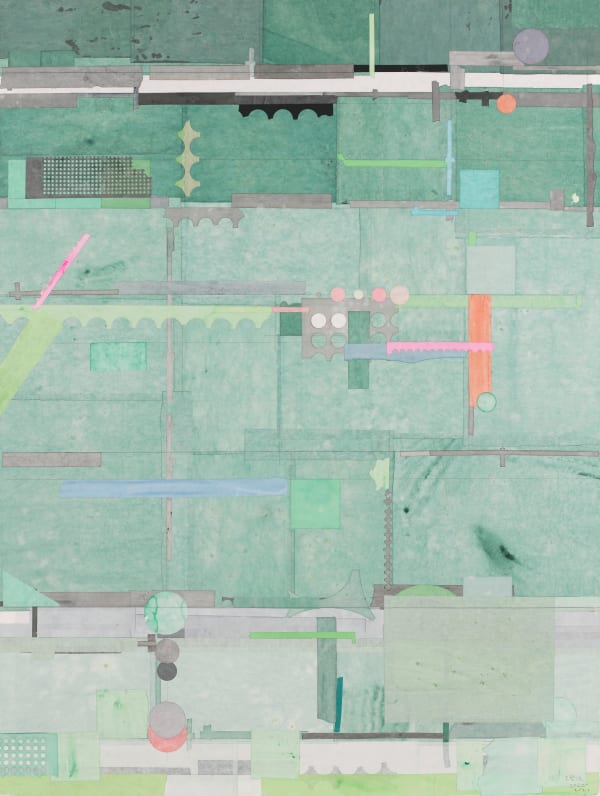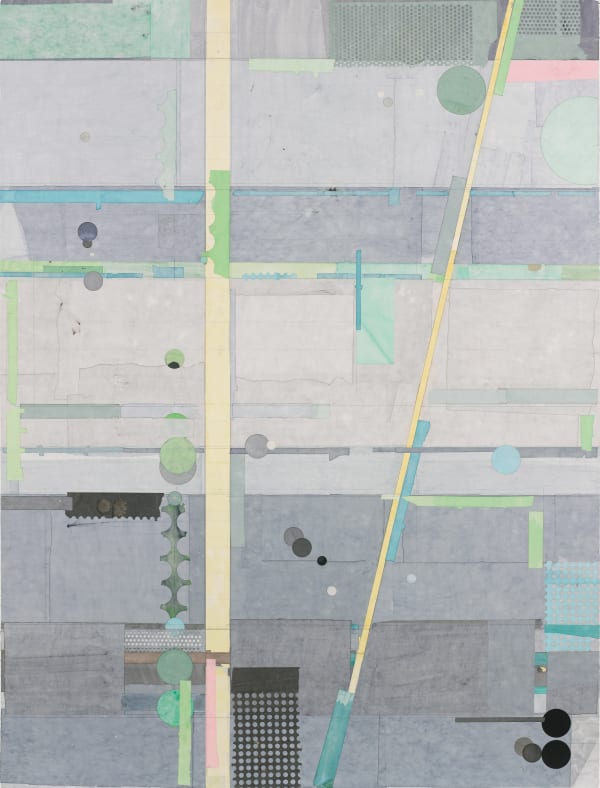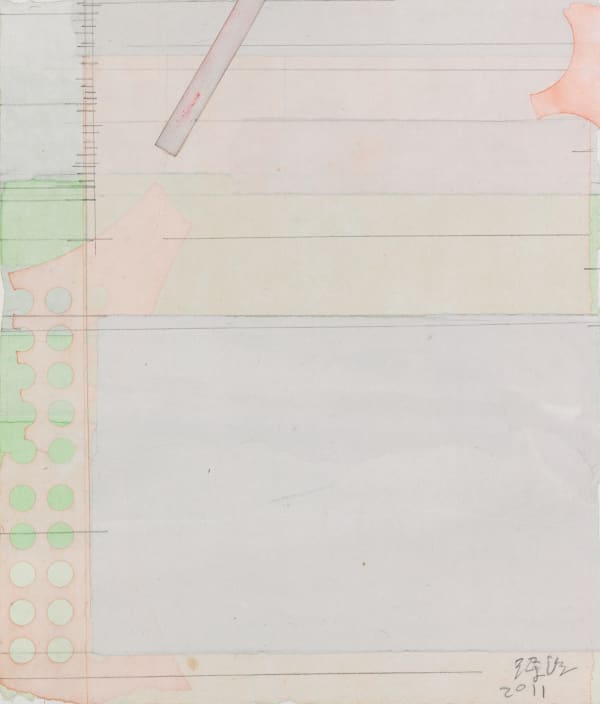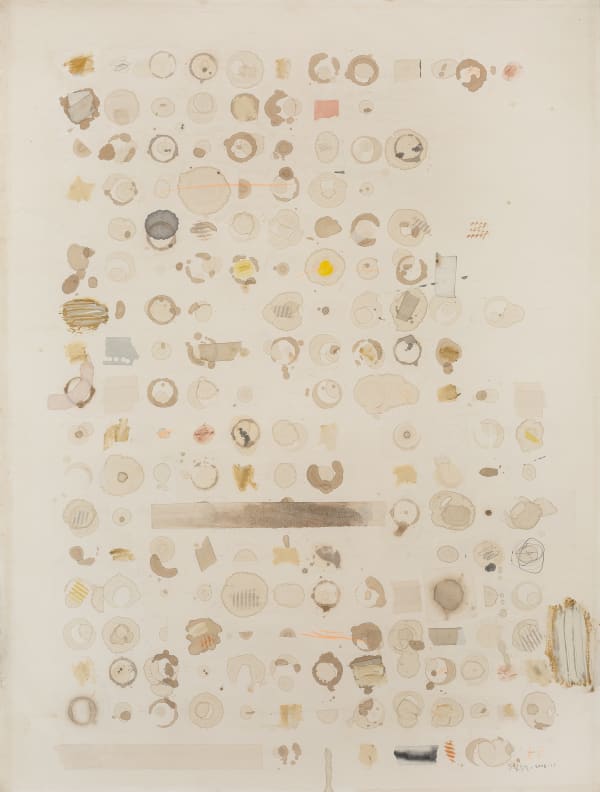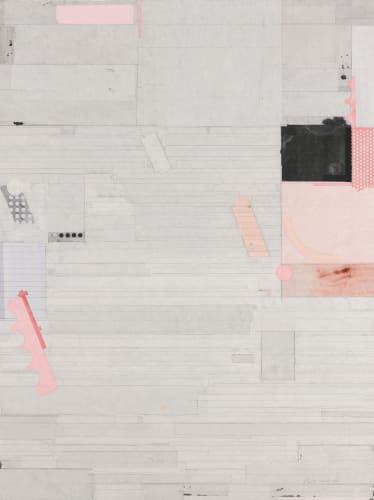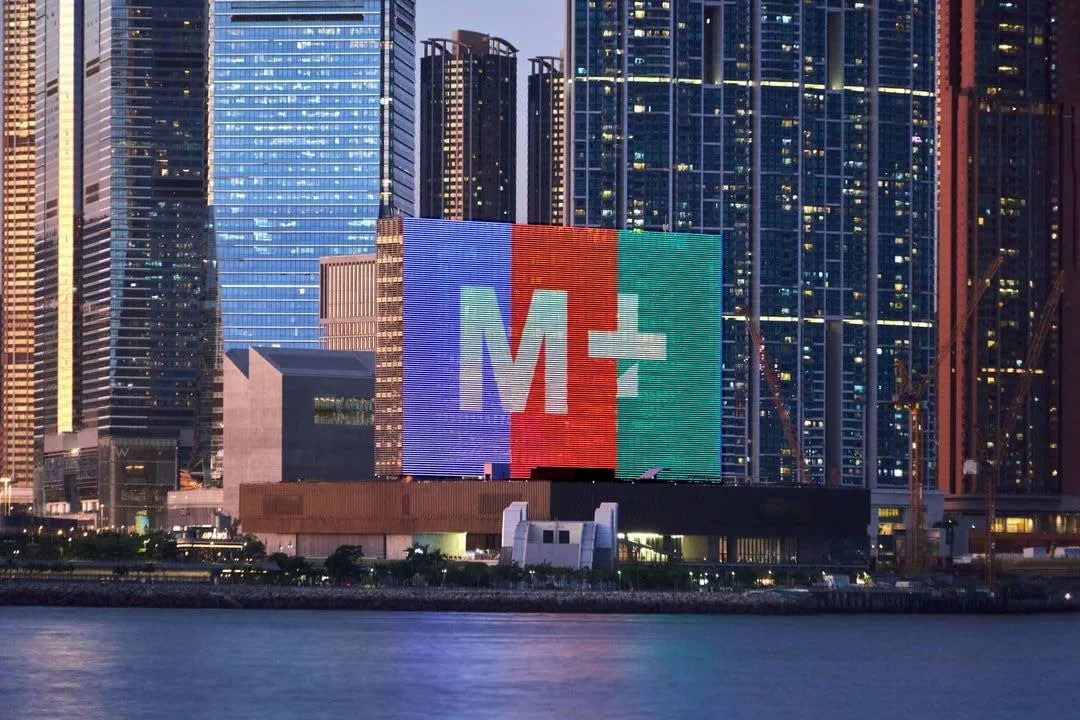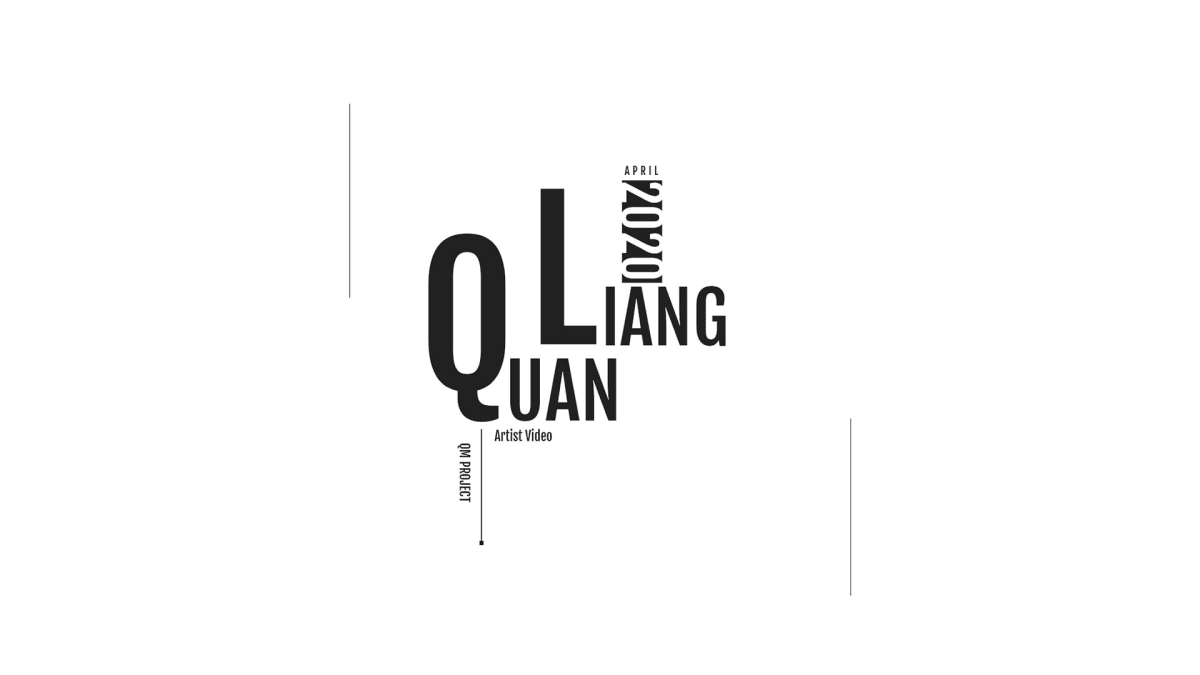Liang Quan (b. 1948, Shanghai) graduated from the Affiliated Middle School of Zhejiang Academy of Fine Arts in 1968. In 1982, he received a MFA degree from the Academy of Art College in San Francisco (currently the Academy of Art University). Liang taught at the China Academy of Fine Arts after returning to China. He now lives and works in Shenzhen. When studying in the United States, Liang became interested in abstract paintings, including the works of Hans Hofmann and Jackson Pollock, as well as those of neo-expressionists. When creating his graduation piece Tribute to Tradition (1982), Liang collaged pieces of paper that had been torn, cut, and painted, juxtaposing abstract color blocks and figurative details. Liang usually creates his collage based on a drawing. In the process of collaging, Liang keeps adjusting his compositions till they reach a satisfactory visual effect, a working method the artist has maintained up to the present.
Around 2000, Liang Quan came across a wooden washboard that had been used by his grandmother. The visual similarity between the washboard and Chinese hanging scrolls inspired him to conceptualize the painting surface in a new manner. “The structure of a washboard is like a mounted painting. The upper and lower parts of a washboard are comparable to the silk brocades mounted above and below a painting; and the part in the middle of a washboard is just like a painting surface,” Liang once said. After 2000, Liang started to cut painted xuan paper into strips and pieces, which he than layers onto abstract compositions using traditional methods of mounting.
Liang Quan’s geometric division of space and luminous color blocks evince the influence of Richard Diebenkorn. Unlike Diebenkorn’s pieces, Liang’s works involve more numerous visual elements that generate complex spatial relationships. Diebenkorn’s paintings center on the interplay between architectural shapes and the light in California, where his studio is located, whereas Liang puts more emphasis on memories and emotions associated with a space. Even for works named after scenic spots, Liang establishes few direct connections between painting details and a specific place. Similar to Chinese literati painting, Liang’s works eschew visual verisimilitude in favor of subjective expression. He once explained: “I like abstract compositions, though the tone of my painting is figurative. My paintings present the rhythm of traditional landscape painting.” For Liang, both structural order and literati sentiments are essential for a painting.
Education
| 1978 |
Enrolled in San Francisco Art Institute to study printmaking |
Solo Exhibitions
| 2019 | The Neo Six Persimmons, HunsandSpace, Beijing, China |
| 2018 | Watching Clouds Go By: Liang Quan’s Creative style and it’s |
| Changes, Hive Center for Contemporary Art, Shenzhen, China | |
| 2017 | Liang Qian Solo Project, Insight, ART BASEL HongKong, HongKong, China |
| Arcadia Revisited: Liang Quan and the Eight Views of Xiao and Xiang Rivers, Hive Center for Contemporary Art, Beijing, China | |
| Liang Quan Light As Tea: Frank F. Yang Collection Exhibition, Extra Space, Shenzhen, China | |
| 2015 | Amassing the Essence: Thirty Years of Paintings by Liang Quan, Hive Center for |
| Contemporary Art, Beijing, China | |
| 2014 | Liang Quan Solo Exhibition, WistariaTea House, Taipei |
| The Joy of Tea:Liang Quan Solo Exhibition, SokaArt Center, Taipei | |
| 2013 | Folds of the Infra-fade, Hive Center for Contemporary Art, Beijing, China |
| 2011 | Bland, WellsideGallery, Seoul, Korea |
| Eight Views of Xiaoxiang, WistariaTea House, Taipei | |
| Sailing Afar -Liang Quan’s New Works, PIFO New Art Gallery, Beijing, China | |
| 2006 | Liang Quan’s Solo Exhibition, Zhu QizhanArt Museum, Shanghai, China |
| 2005 | Liang Quan’s Solo Exhibition, M.SutherlandFine Arts, New York, U.S.A |
| 2004 | Liang Quan’s Solo Exhibition, Mies van Der Rohe Haus, Berlin, Germany |
Group Exhibition
| 2019 | “Good” told by the nature, OCT, Foshan, China |
| 2018 | Post-Brushwork Era: Chinese Landscapes, Guangdong Museum of Art, Guangzhou, China |
| 2017 | Bi-City Biennale of Urbanism/Architecture, Shenzhen, China |
| The Weight of Lightness: Ink Art At M+, M+ Museum, Hong Kong, China | |
| Return to Otology: Tracing the source of acstractart in the new period of Guangdong, LingnanMuseum, Guangzhou, China | |
| Troposphere: Chinese and Brazilian Contemporary Art, Beijing MinshengArt Museum, Beijing, China | |
| Tracing the Past and Shaping the Future: PowerlongMuseum Inaugural Exhibition, Powerlong Museum, Shanghai, China | |
| Shanghai Galaxy Ⅱ, YuzMuseum, Shanghai, China | |
| Polar Region: Exhibition of New Ink Art, Ink Asia Hong Kong, Hong Kong, China | |
| Emersion of AURA: Inaugural Exhibition for Hive‘s New Space in | |
| Shenzhen, Hive CenterforCon temporary Art, Shenzhen,China | |
| 2016 | A Ride to Combine: Hive’s Special Exhibition 2016, Hive Center for Contemporary Art, Beijing, China |
| Ten Years Collection Exhibition, Bridge Gallery, Beijing, China | |
| Disguised Form-Ink Paintings’ Dimension, Guangdong Museum, Guangzhou, China | |
| Contemporary Ink Art Invitational Exhibition, Enjoy Museum of Art, Beijing, China | |
| No.19 in ShenyunRoad-Shenzhen International Invitational Exhibition, ArtronArt Centre, Shenzhen, China | |
| Exhibition, ArtronArt Centre, Shenzhen, China | |
| Abstract and Beyond: The Research Exhibition of Abstract Art in China, Shanghai MinshengArt Museum, Shanghai, China | |
| The World is Yours, as Well as Ours, Mason’s Yard, London, England |


